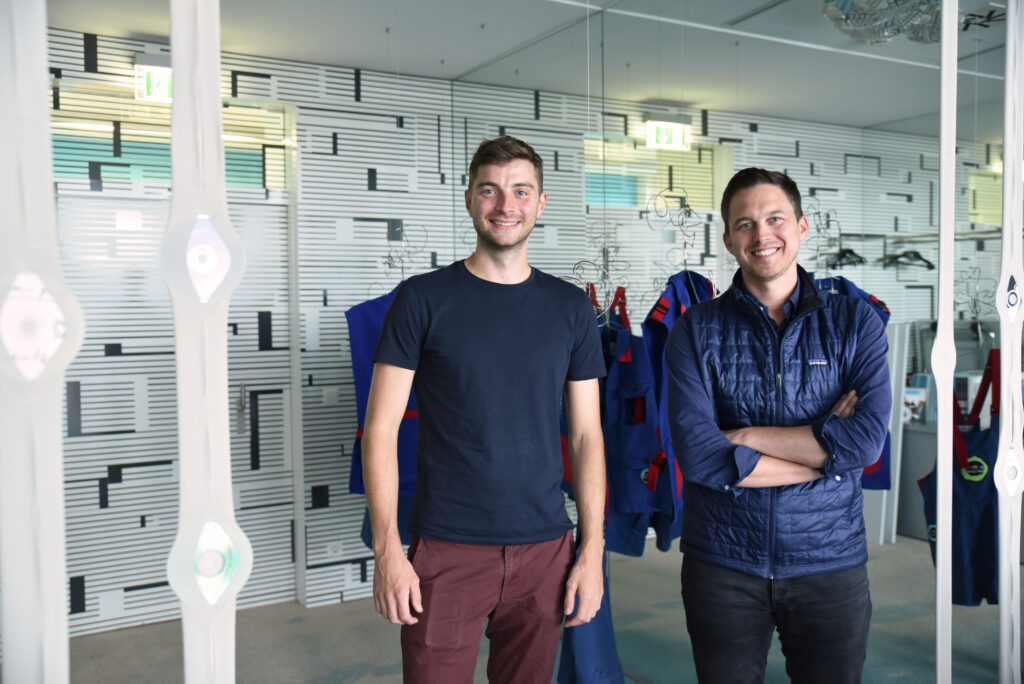November 7, 2022
Preventing resistance in cancer therapy
The latest developmental drugs, particularly for the use in oncology, rely on the targeted degradation of harmful pathogenic proteins. In a recent study, researchers at CeMM, the Research Center for Molecular Medicine of the Austrian Academy of Sciences, and the University of Dundee (UK) identify potential resistance mechanisms and provide insights on how to overcome them. Their study was published in Nature Chemical Biology on November 3, 2022.
Traditional targeted cancer therapies mainly rely on drugs that bind pathogenic proteins and inhibit their function. The latest development of drugs has brought forward chemical molecules known as degraders, which force the targeted degradation of disease relevant proteins. This method of targeted protein degradation is not only more efficient but also better at overcoming potential drug resistance. For many years, CeMM Principal Investigator Georg Winter and his research group have been working on further developing this paradigm. Small-molecule degraders work like a glue by recruiting the defective, disease-causing protein to effectors of the cellular waste disposal systems, which are known as E3 ubiquitin ligases. This binding in turn kick-starts the degradation process of the defective protein. Alexander Hanzl, first author and PhD student in the Winter Lab at CeMM, conducted a study to investigate which resistances can arise during the degradation process. He explains, “One challenge with degraders is that they have to bind two sites at once – both the defective protein and a protein of our cell’s own degradation system, the E3 ligase. It is therefore all the more important to understand the process of binding and ubiquitination in functional detail. Only then can future degraders be modeled in the best possible way.”
Results confirm clinically observed resistances
In their study, the authors identified a variety of mutations on E3 ligases which mediate resistances in cell cultures. These include mutations already identified in patients whose therapy with degraders was unsuccessful. Georg Winter, who supervised the study, explains: “We tested a large number of different proteins and degraders. On one hand, we see that some mutations in E3 ligases prevent defective proteins from being recruited. At the same time, however, we see that some of these mutations exhibit high sensitivity to chemically modified degraders. Therefore, mutations can still be targeted by changing the chemical structure of the degrader. In other words, resistances can be overcome.” This demonstrates that the results of this study can have clinical relevance as well.
Increasing the reach of degraders
A number of degrader drugs are currently being tested in clinical trials, and some are already available to patients, especially for various types of blood cancers. The increased understanding of resistance mechanisms enables further improvement of these types of drugs. “Traditional therapeutics that take the approach of blocking an isolated function of a protein only reach about 20% of our proteins. For the other 80% there are no suitable binding sites and as a result, they cannot be targeted. We see great potential in this new generation of drugs using targeted protein degradation to significantly increase the space of targetable proteins and potentially reach the remaining 80% of proteins”, Winter says. The study results make an important contribution to the improved design of degraders. Cancer patients in particular could benefit from a clinical application of the findings in the future. Alessio Ciulli, professor at the University of Dundee, adds, “For the first time we have been able to examine at the molecular level how drug resistance emerges by virtue of these E3 ligase mutations. This is extremely important because these findings highlight the mechanism that can anticipate how a patient might respond to these drugs.”
Publication:
Functional E3 ligase hotspots and resistance mechanisms to small-molecule degraders.
Nature Chemical Biology. 2022 November 3.
DOI: 10.1038/s41589-022-01177-2
Authors:
Alexander Hanzl, Ryan Casement*, Hana Imrichova*, Scott J. Hughes, Eleonora Barone, Andrea Testa, Sophie Bauer, Jane Wright, Matthias Brand, Alessio Ciulli#, Georg E. Winter#.
*shared contribution
#correspondence
Please see the CeMM news here.
For further information please contact Anna Schwendinger: aschwendinger@cemm.oeaw.ac.at

First author Alexander Hanzl and last author Georg Winter (© Laura Alvarez / CeMM).